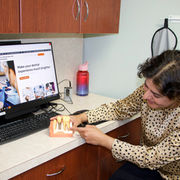Dental Emergency | Doctor Michael Ofir | Pain relief, Tooth Extraction
- Avalon Dentist
- Jul 19, 2019
- 3 min read
It’s important to understand the difference between a standard dental issue that can wait until morning and a real emergency that can threaten your health or cost you a tooth. Here’s what you should know about recognizing dental emergencies.
How to Know if it’s a Dental Emergency
According to American Family Physician, about 22 percent of people have experienced dental or oral pain in the last six months, showing just how common dental emergencies can be.
Still, not every dental situation should be considered an emergency. To help you determine if you can wait to be seen by your dentist or if you need to take a trip to the ER or an emergency dentist, ask yourself the following questions:
Are you in severe pain? Severe pain and bleeding are signs of an emergency.
Have you lost a tooth? Fast treatment can potentially save a tooth.
Do you have loose teeth? Adults should never lose teeth. A loose tooth, even without pain, is a serious problem.
Do you have an infection? An abscess or serious infection in your mouth can be potentially life-threatening, and treatment should not wait. You may notice swelling or knots on your gums or swelling around the face.
Are you bleeding from the mouth? This is a potential sign of an emergency.
In general, any dental problem that needs immediate treatment to stop bleeding, alleviate severe pain, or save a tooth is considered an emergency. This consideration also applies to severe infections that can be life-threatening.
If you have any of these symptoms, you may be experiencing a dental emergency. Call your dentist immediately and describe what happened. If your dentist’s office is not open, you may need to go to an emergency dentist or the ER.
Common Dental Emergencies
If you’re suffering from any of the following common dental emergencies, here’s what you need to know about caring for the problem until you can get to a dentist.
Knocked-Out Tooth
According to the American Association of Endodontists, with quick action after a tooth has been knocked out, it’s possible your dentist will be able to reinsert and preserve your tooth.
Carefully pick up the tooth by the crown or the top, taking care not to touch the root, and carefully rinse it without scrubbing. If possible, reinsert the tooth in the socket. If you can’t, place the tooth in a small container of milk and get to the dentist quickly to increase the chances of saving your tooth.
Cracked or Chipped Tooth If you have a very painful or serious fracture, clean your mouth with warm water and apply a cold compress to the outside of your face to reduce swelling. Take acetaminophen for the pain but avoid using a painkiller or numbing gel because it can damage your gums.
Abscessed Tooth A dental abscess is a severe and potentially life-threatening condition in which a pocket of pus in the tooth has led to an infection. A tooth abscess may cause fever, tooth sensitivity to hot and cold, a persistent toothache, tender lymph nodes in your neck, swelling in the face, and a pimple-like bump on your gums near the infected tooth.
This condition is an emergency as the infection can spread into your jaw, surrounding tissue, and to other areas of the body. Before you can see the dentist, rinse your mouth with mild salt water several times to reduce the pain and draw the pus to the surface.
See review from one of our dearest patient:
Are you in pain? You have a dental emergency?
Doctor Michael Ofir and staff at Avalon Dental Center in Somerville and Cambridge will help you as soon as possible!
Do not waste your time, call us today at 617-776-9000 or schedule your emergency appointment online. We gonna help you right away!

















Comments